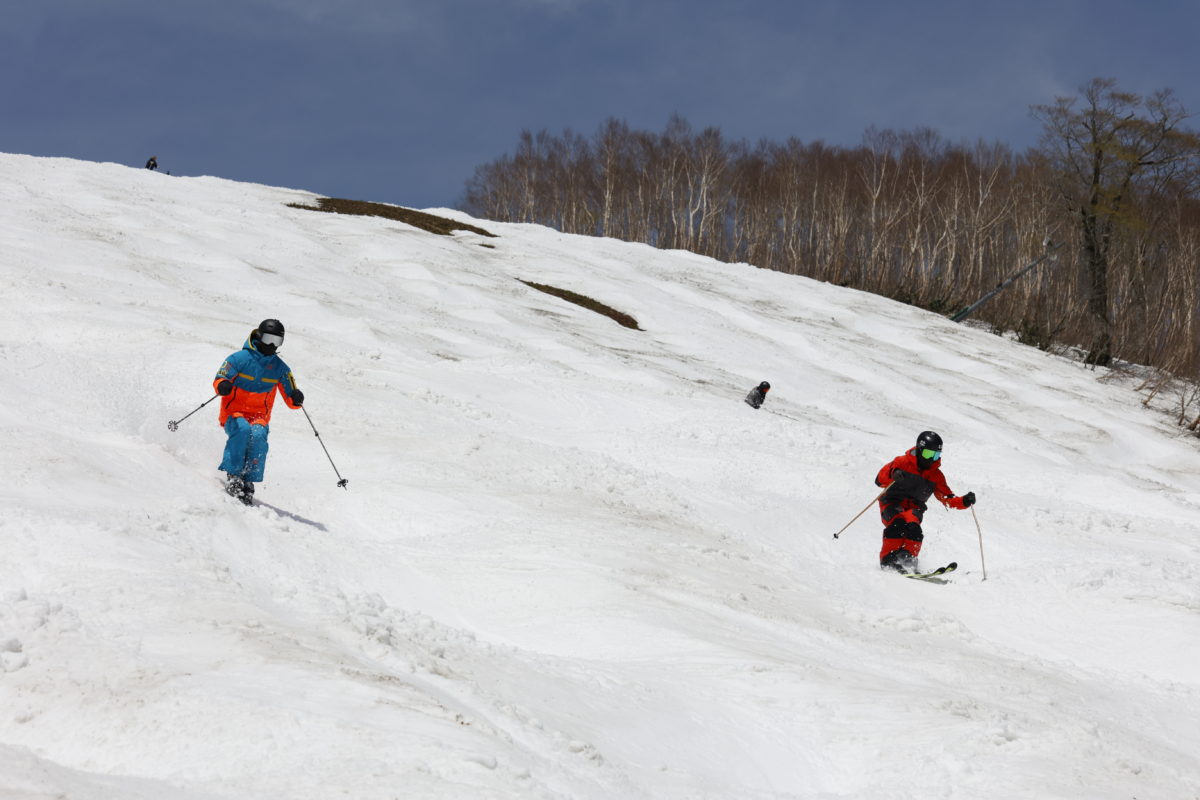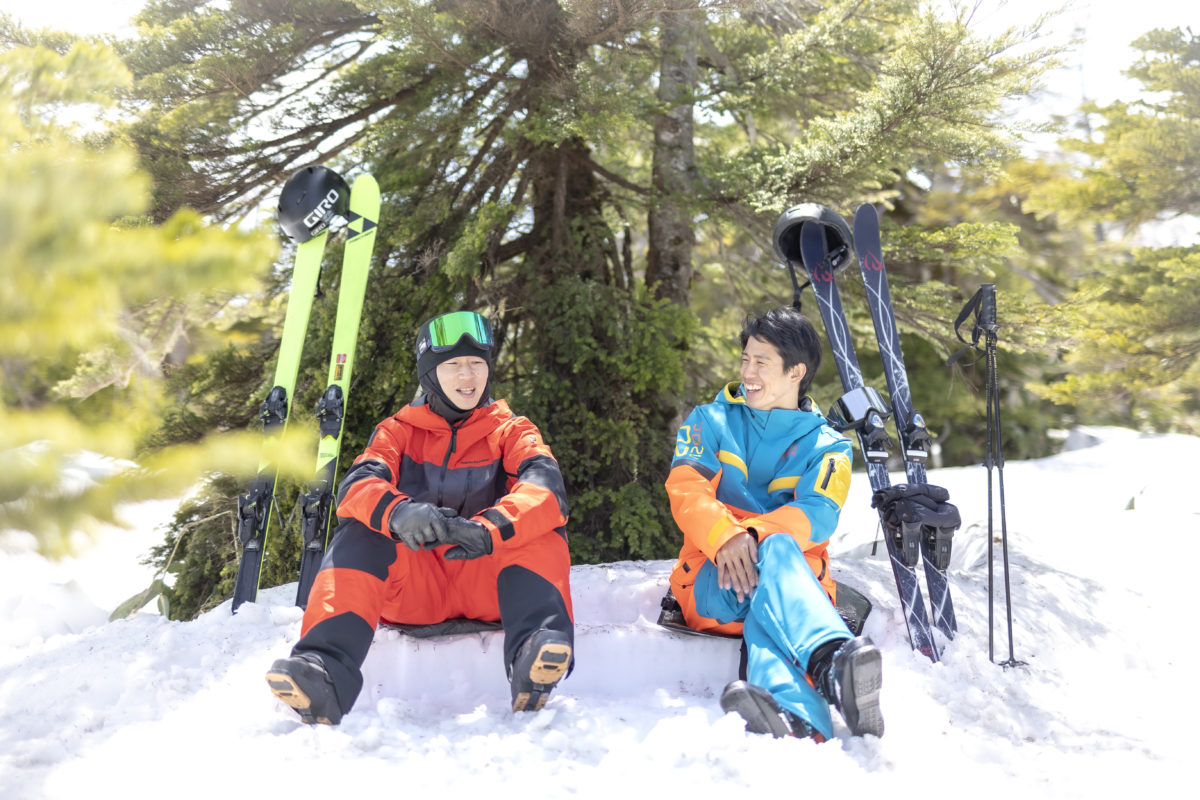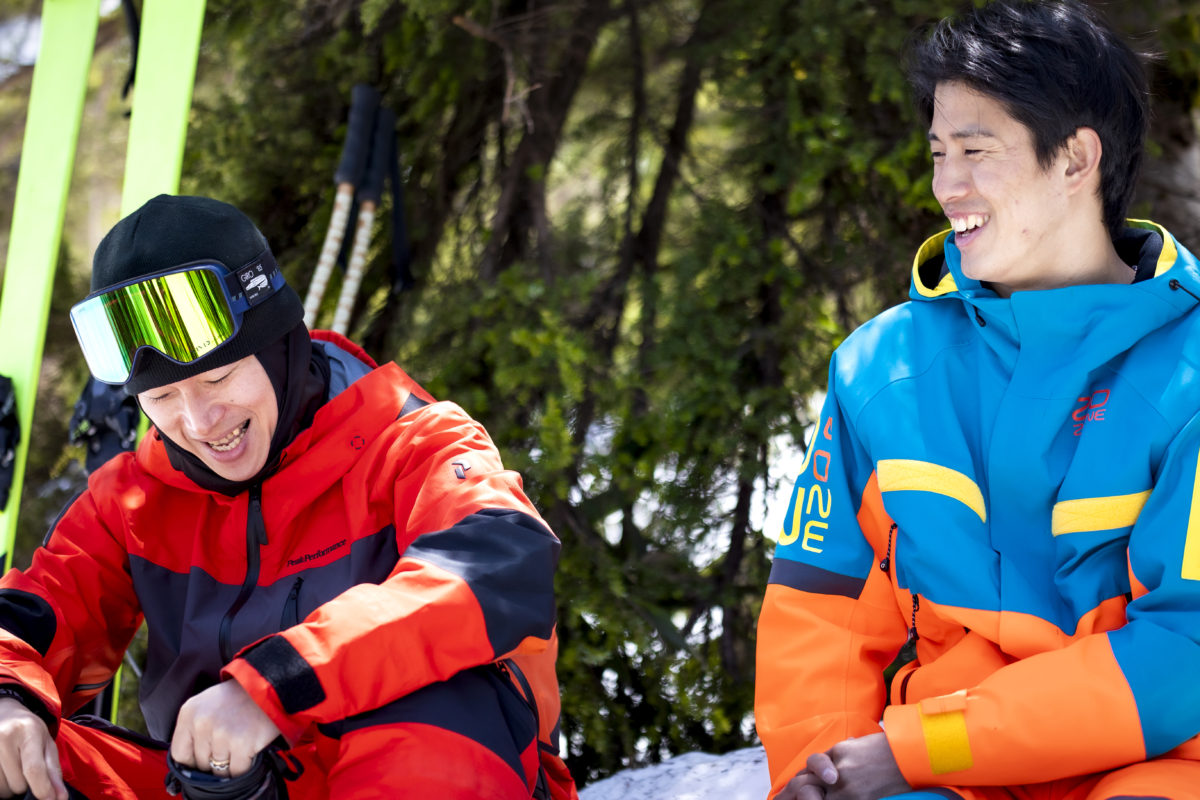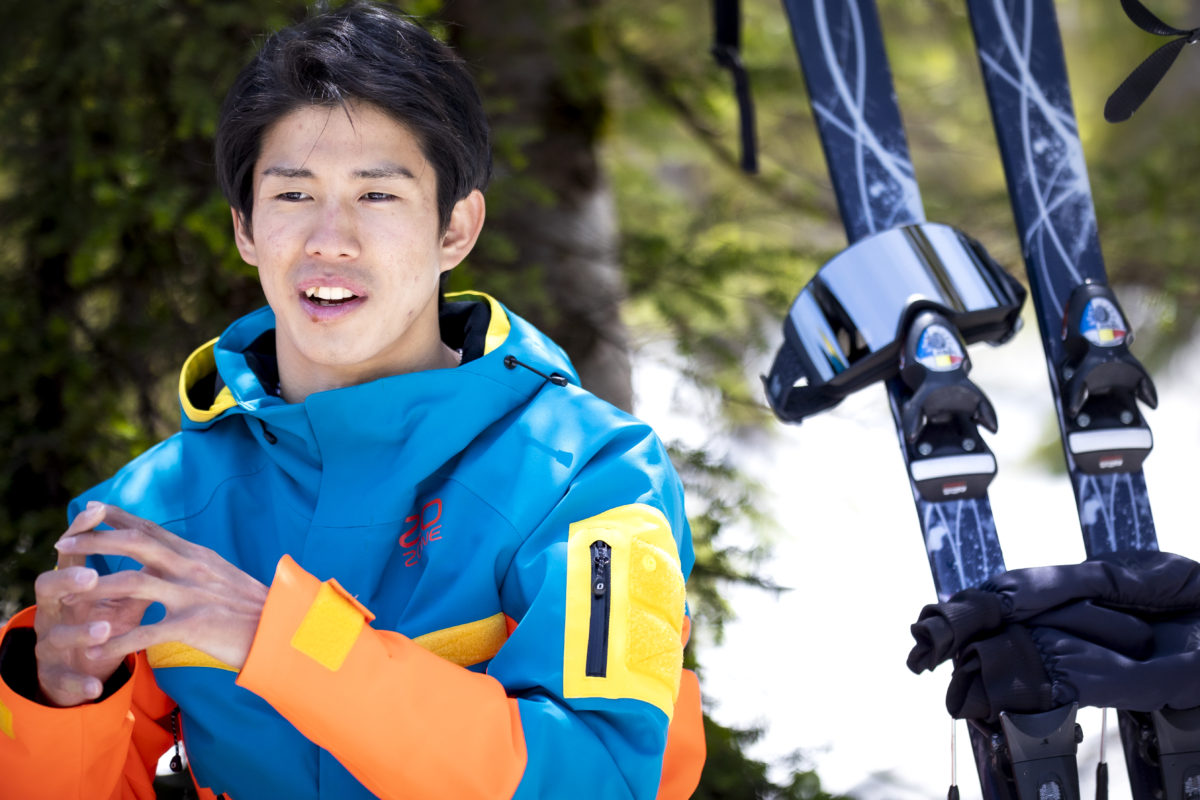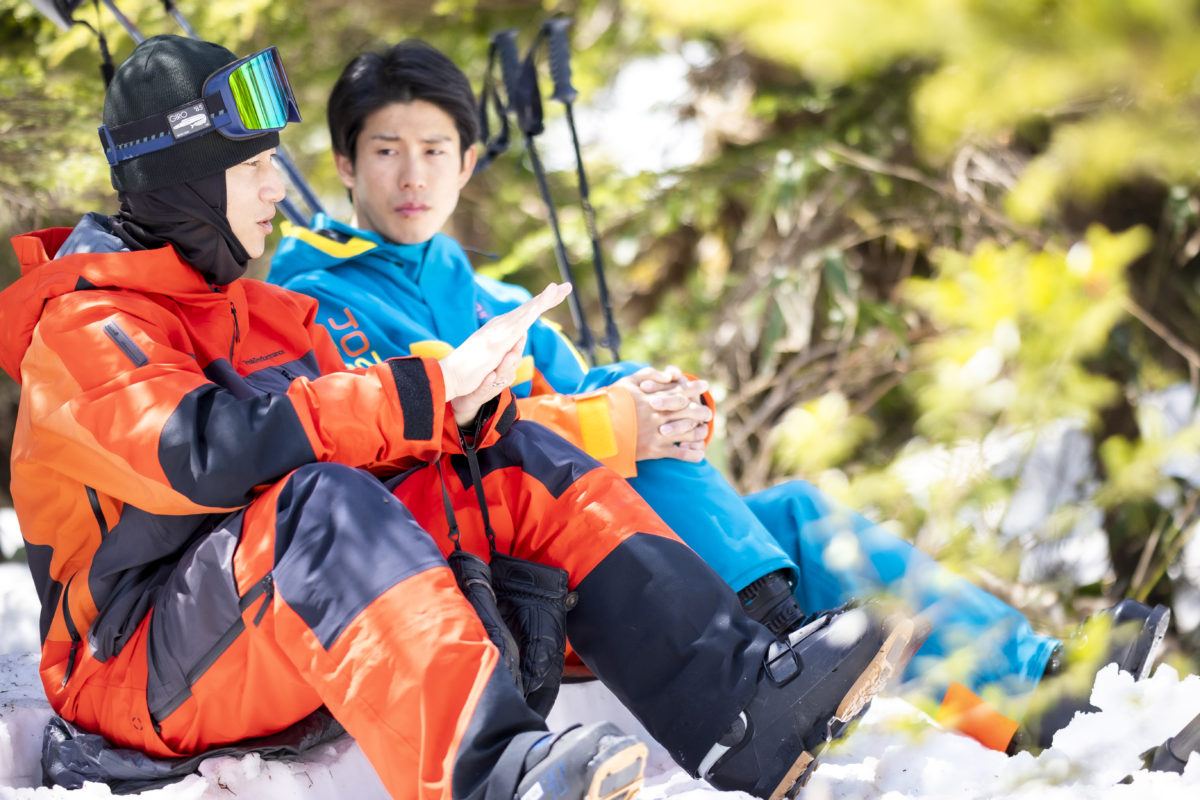Photo/Tomohiro Watanabe
Coverage cooperation/ Kagura Ski Resort
The spring season, when the sun shines brighter and the snow softens, is the best time to ski. Unlike the high season when the skis are stiff, the shock is easily absorbed even when the skis are run straight, making it easy to increase speed.
Spring is the level of bump runway. Nobuyuki Nishi, who was the principal of Kandatsu Fusion Bump School and was on the Japanese national team for about 16 years and participated in the Olympics three times in a row from Vancouver to the Pyeongchang Olympics, and Yuki Horishima, a bronze medalist at the Beijing Olympics, who is still fresh in our memory. Makoto held a session on the theme of "Sliding bumps fast".
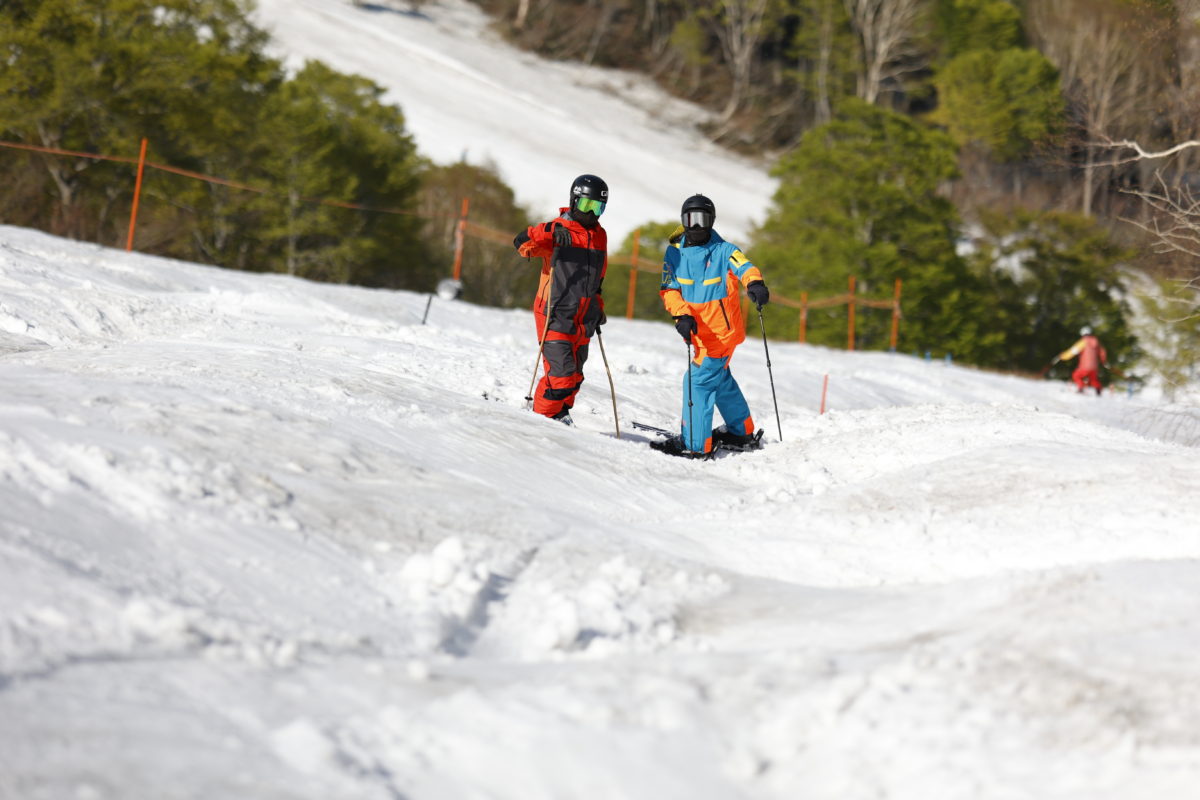
Soft spring snow is perfect for speed training. We both have that as a common understanding
We asked people who are already able to ski bumps to some extent to talk about the charm of skating fast and the techniques and strategies necessary for skating.
Also, Nishi and Horishima will introduce their respective methods for skating down bumps fast.
The charm of sprinting over bumps at high speed
Editorial Department (below): In the first place, what is the fun of skating down bumps?
Nobuyuki Nishi (hereinafter referred to as Nishi): For me, there is the idea that "fast = cool."
Skiing stands out, isn't it? I've been skating on Hakuba for a long time. If there are no people on the lift, I think I should stop skating. Until the number of people increases, I play around with boots and touch boards. It's not "look at me", but it's pretty strong that I want to stand out and be cool.
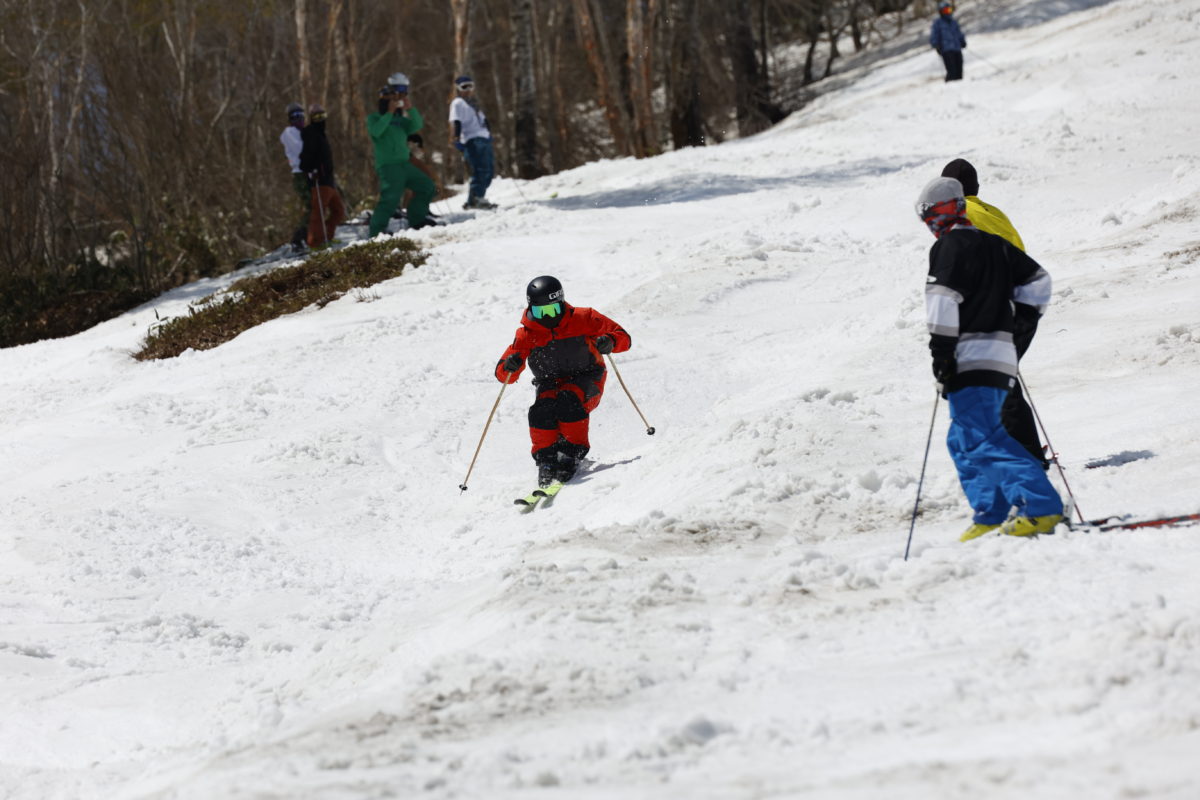
Nobuyuki Nishi, who says that "Standing out" doesn't change even after retiring as a player and becoming a coach
Yukima Horishima (hereinafter Horishima): I think I understand what you just said. You will be conscious that the lift is nearby. I don't think you can show the speed of skiing with your own feet, not just moguls. Even if you run, you can never get a sense of speed like skiing. That's why it's fun to feel the speed and slide down bumpy slopes. I feel like I'm pushing my limits.
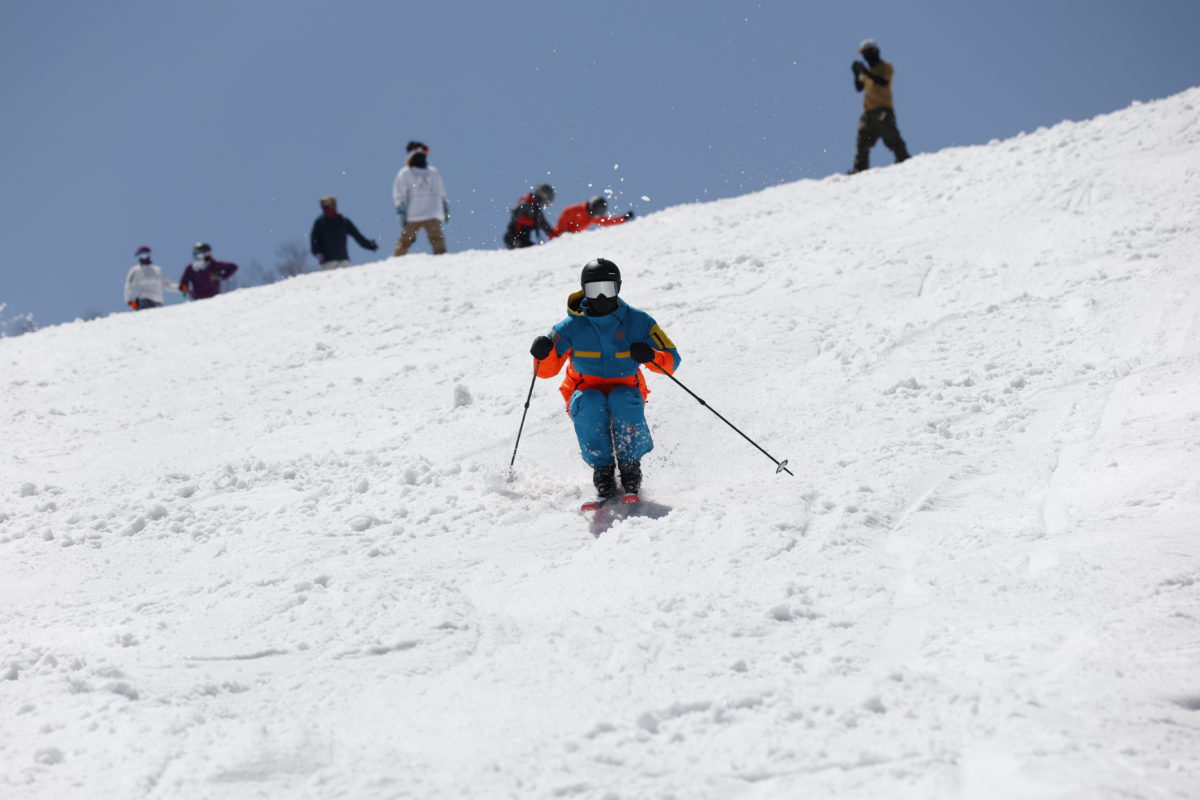
Gyoma Horishima also says that he is conscious of the gaze of the viewer. Exploring the limit speed is one of the fun of Cobb
Nishi: When I was doing the competition, airs and turns were something people looked at and scored.
Only the speed is different. I've always been very particular about my speed, and it's okay to make a few mistakes, but I always wanted to skate faster than anyone else. Somewhere along the line, the person who can skate the fastest is also good at bumps. Of course, there are things you have to do in order to skate cleanly and to get good marks, but since I was little, I vaguely remembered that “fast speed = good”.
Horishima: When I was active, I overlapped with Mr. Nobu, and I played dual moguls about 3 games, but I lost 2 games and won the last one. After all, there is an image of that "fast = Mr. Nobu". I learned some things when I was active, so I thought it would be interesting to find out how Nobu-san and I skated so fast.
How do you see each other's speed on bumps?
Edit: How do you see each other in terms of speed?
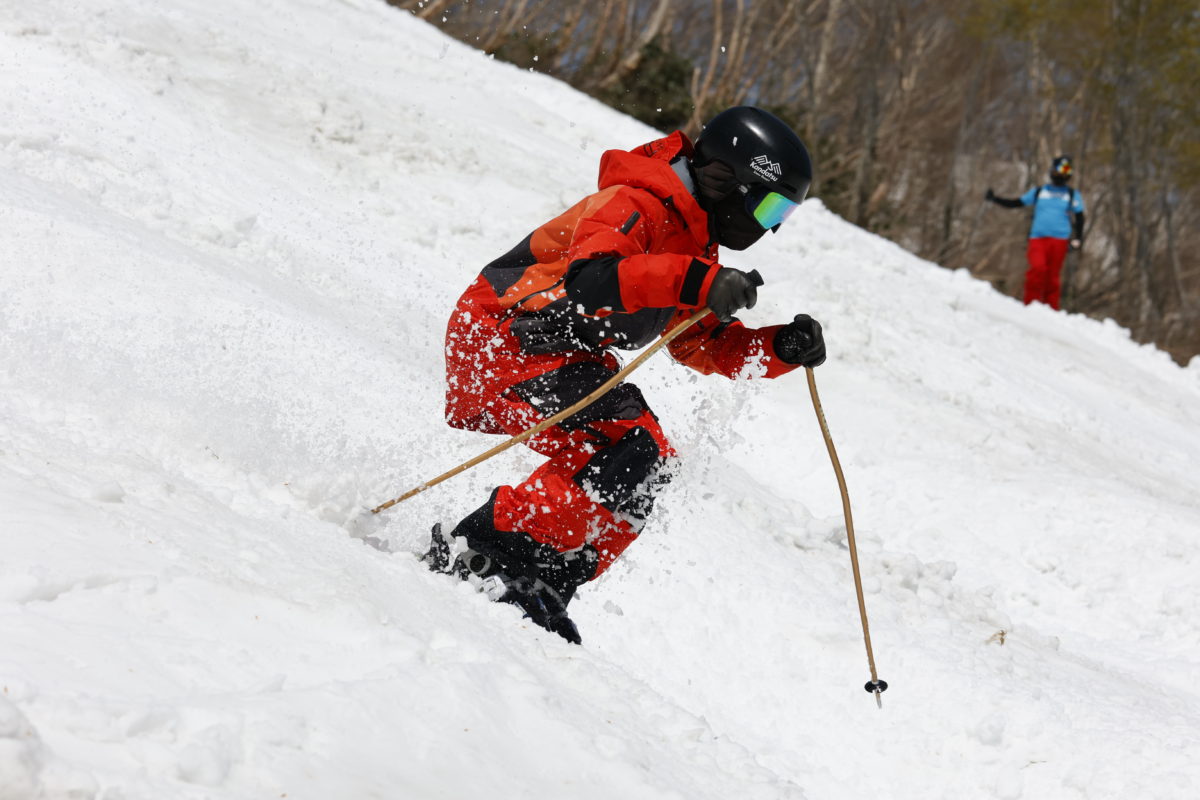
Nobuyuki Nishi gradually picking up speed on regularly lined bumps
Horishima: I joined the national team when I was in my first year of high school, and I skied with Nobu-san until he retired after the Pyeongchang Olympics. There are a lot of parts that imitate the appearance of being cool.
The first time I played dual mogul with Nobu was All Japan when I was in the third grade of junior high school. It was there that I saw the speed of Nobu-san and his team competing in the world for the first time. I think I learned a lot about reaching the goal.
Nishi: I think there are two main ways to speed up and fly on bumps. To put it in extreme terms, you can ride a little forward from the middle of the ski and step on the back side of the bump to accelerate, or you can't go as far as leaning backwards, but you can ride a little backward and get out of the board. Get better and slide faster. I believe there are two patterns.

Horishima keeps a forward position and speeds up
Speaking of which, Ikuma said that he didn't really understand how to ride at the back and speed up. He's in a really good position. I think he's the type to ride very forward and create speed. If anything, I'm conscious of the omission of bumps. I'm good at putting a little bit of a back position to make it easier to get through and speed up. I think that's the big difference between the two.
Horishima: There may be differences in the positioning of positions.
Edit: If you look at it from the side, it's almost impossible to tell the difference.
Nishi: I think so. Just a little bit in front of and a little bit behind the riding position. I think it's an amazing place.
The sense of speed is slightly different between the two
Hen: What kind of steps did the two of you take to raise the limit speed of Cobb?
Nishi: I think the faster you go, the more fear you get.
So I think it's very important to figure out how to get rid of it. It is very important to be able to increase your confidence and increase your success experience. For example, it's impossible to ski fast on steep bumps that are extremely hard from the beginning, but you can do it on gentle bumps. To increase the number of such successful experiences.
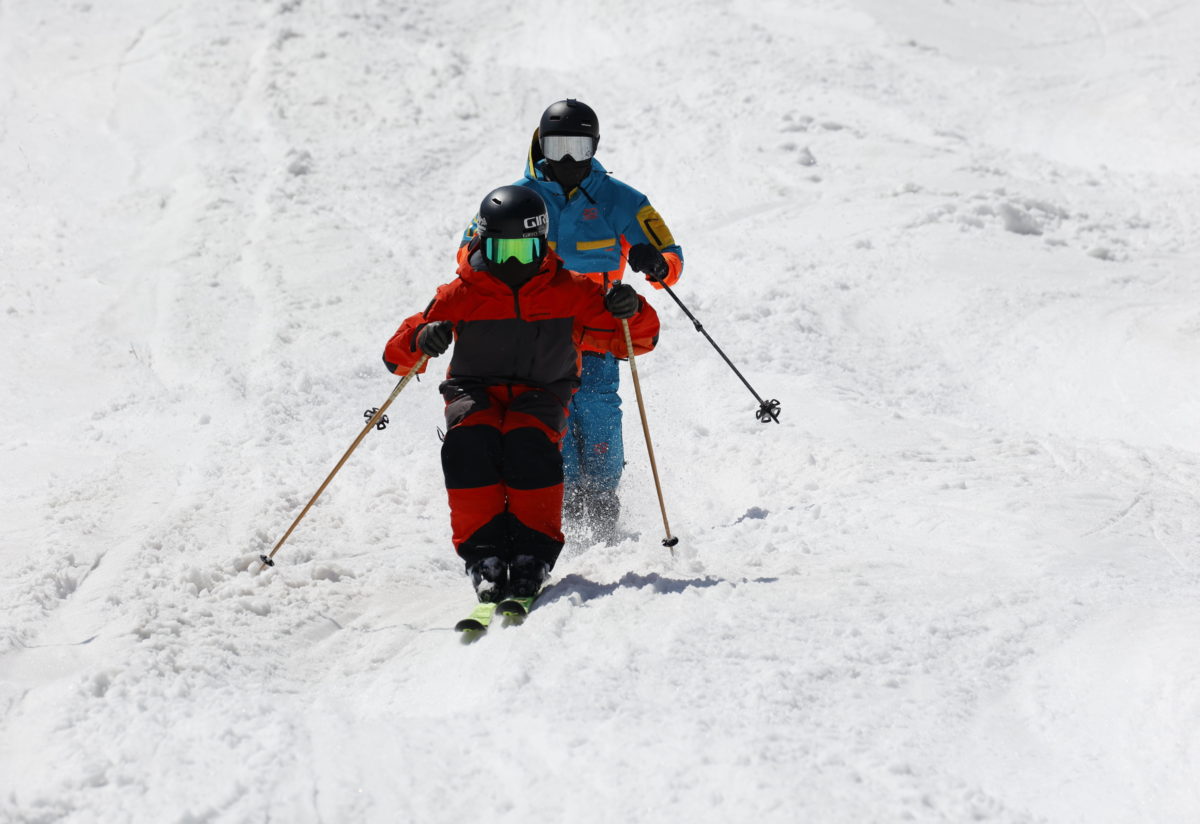
Gentle slopes are perfect for pushing your speed limits. It is important to accumulate the experience of skiing well
No two bumps are the same. I believe that the more experience you have, the faster you can go. So, in order to get rid of the fear, the image is to let the body learn more and more successful experiences, apply those experiences to various slopes and bumps, and further increase the experience value.
Horishima: I think you are right.
Having a successful experience is very important. On top of that, from a technical point of view, snow surface contact.
If you can ski as if the skis are touching the snow all the time, you will feel more stable when you pick up speed. Because floating in the air creates fear. But when we really ski, the skis float in the air. I think the final stage is skiing over bumps at speed as if building a bridge between bumps without making contact with the snow surface.

The faster the speed, the less snow contact
Nishi: What I always keep in mind is that from the skier's point of view, I'm conscious of applying a lot of shin pressure near the top of the part where the bump is climbing. Especially when skating fast in a straight line.
After that, always balance the pressure that comes from the lump and the power that you put on yourself. The faster you go, the stronger the pressure from the bumps, even if you're skating the same bumps. If you slide at the same speed, for example, if the pressure from the bump is 5 out of 10 levels, you will return it with 5 power. If I get off at an even speed, I have this image.
When this wants to slow down, return with 6 or 7 pressure against the bump pressure that came with 5. In this case, you can slow down without changing the line taking significantly. Conversely, when accelerating, I try to adjust the speed by applying a pressure of minus 1 or 4 to the pressure that came at 5.
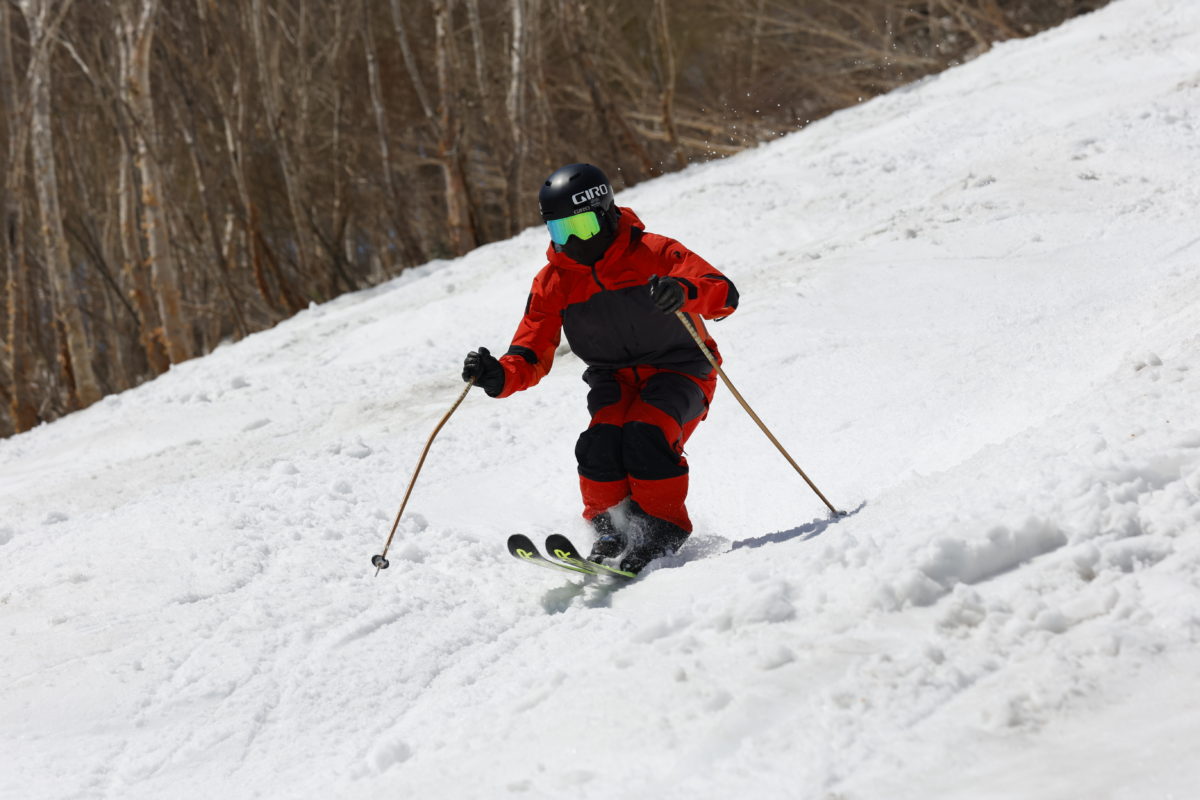
Nishi skates at high speed as if she is having a conversation with Kobu.
Horishima: I understand that feeling. By the way, when you say how to apply pressure, do you have an image of how you feel when you touch bumps?
Nishi: Yes, it feels like that. It's all about how much pressure you apply. There is not much feeling of pulling up the knee, and it is an image of weakening the pressure. I'm not very conscious of the position of my waist, high or low. There are skis under the body. In particular, if the boots protrude sideways or forward from under the body, the skis will run, so when controlling speed, the boots are always under the waist, and the pressure is increased. I'm doing like
Gyoma Horishima's Cobb Speed Adjustment Method
Edit: Mr. Horishima, what kind of speed adjustment method do you have in mind?
Horishima: In the case of Haruyuki, I'm very conscious of "stepping on the back (of the bump)".
Move your position slightly forward so that you can easily enter from the surface of the hump to the back side. As if going forward with each turn, raise your hips and when you get behind the hump, you can step on the board by putting your strength on the side of your feet, so you are stepping on the board on a steep slope. It becomes a sensation and you can get more and more speed.
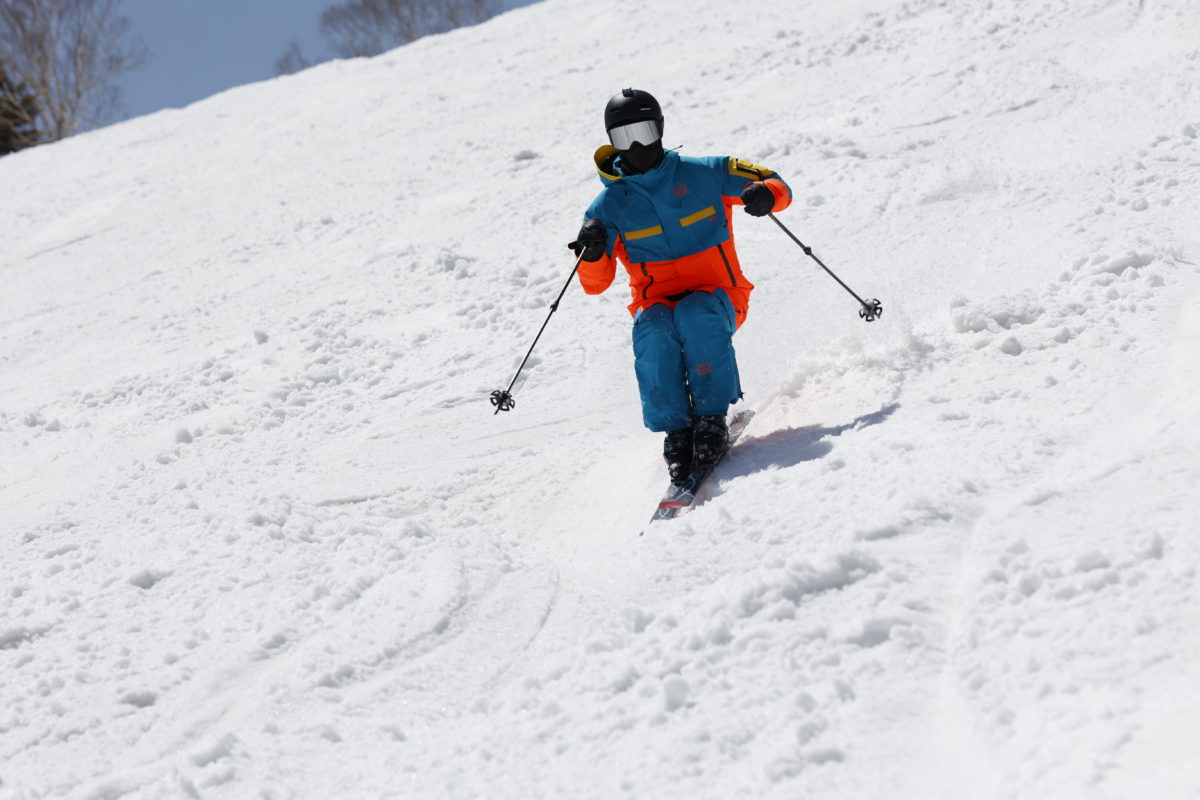
However, I can't step on the back side of the bump all the time, so after stepping on it, when I hit the top of the bump, I feel like I'm balancing while maintaining a position where the top of the ski falls immediately. After that, when the speed reaches a certain level, I do it in a form where it really does not move.
Nishi: Ikuma has that image. It's like stepping on it and stepping on it (speeding up).
Horishima: Those who can run fast will understand this feeling. But stepping on the back of the bump to accelerate is about the first turn or two. After that, I almost never do that. When it's a very hard burn, I'm going to suppress 1 turn 1 turns. Even so, the speed is steadily increasing, so the most important thing is how long you can keep the ski under your body. While there is speed, you can touch the surface of the snow while maintaining your position.
Two people who bloom in Cobb talk. Discussing each other's technical theory while exchanging hand gestures
Edit: Can you give an example of speed adjustment during competition?
Horishima: When you're skating in the middle section, if you don't adjust your speed in front of the 2 air, you'll fly too far. 2 Apply a little stronger pressure to the snow surface from about 5 bumps in front of the air. If you slide about 5 bumps, the speed will drop moderately, so it's a shape that flies through the air at that speed and slides through one. The position for skating fast is also the place where it's easiest to lose balance, so I'm skating while being conscious of maintaining my balance there. I try not to speed up or slow down too much.
Edit: Okay, thank you very much.
Nishi and Horishima prepared five methods for skiing fast on bumpy slopes in line with the theme of the discussion, "Slide fast on bumps."
Nobuyuki Nishi tells us two things: "maximize the pressure at the top of the bump" and "pile up successful experiences."
Gyoma Horishima has three items: ``step on the back of the bump'', ``timing to hit the pole'', and ``slide in a straight line on the bump''.
These will be introduced later in the video.
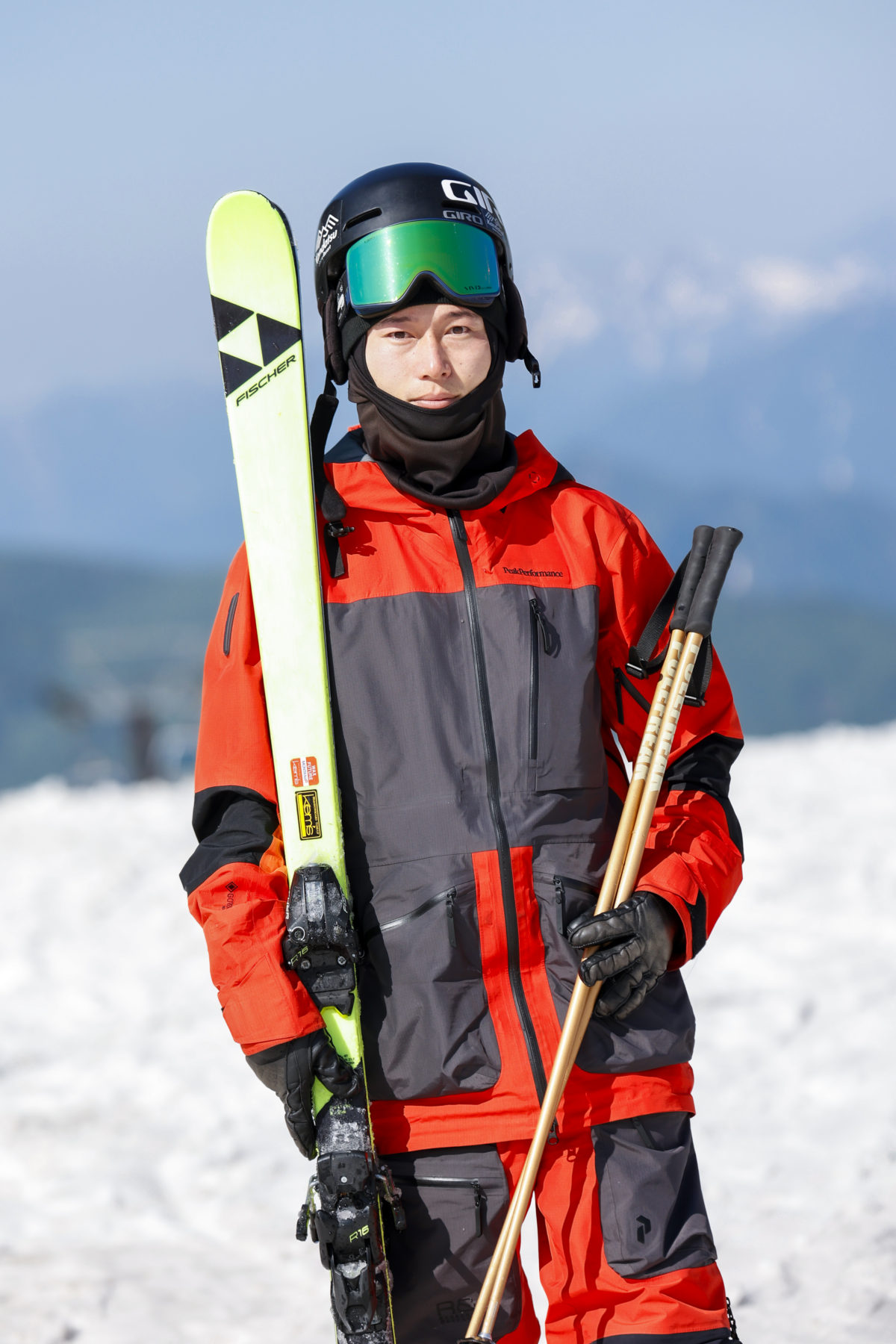
Nobuyuki Nishi
Born July 13, 1985 in Kawasaki City, Kanagawa Prefecture
Belonged to the national team for 16 years from 2002. He has won two consecutive silver medals at the World Championships, and has won three Olympic Games in Vancouver, Sochi, and PyeongChang. He is currently the headmaster of the Kandatsu Fusion Bump School, spreading the joy of bump skiing.
Instagram: nobuyuki_nishi_241
Kandatsu Fusion Bump School https://www.kfbs.jp/
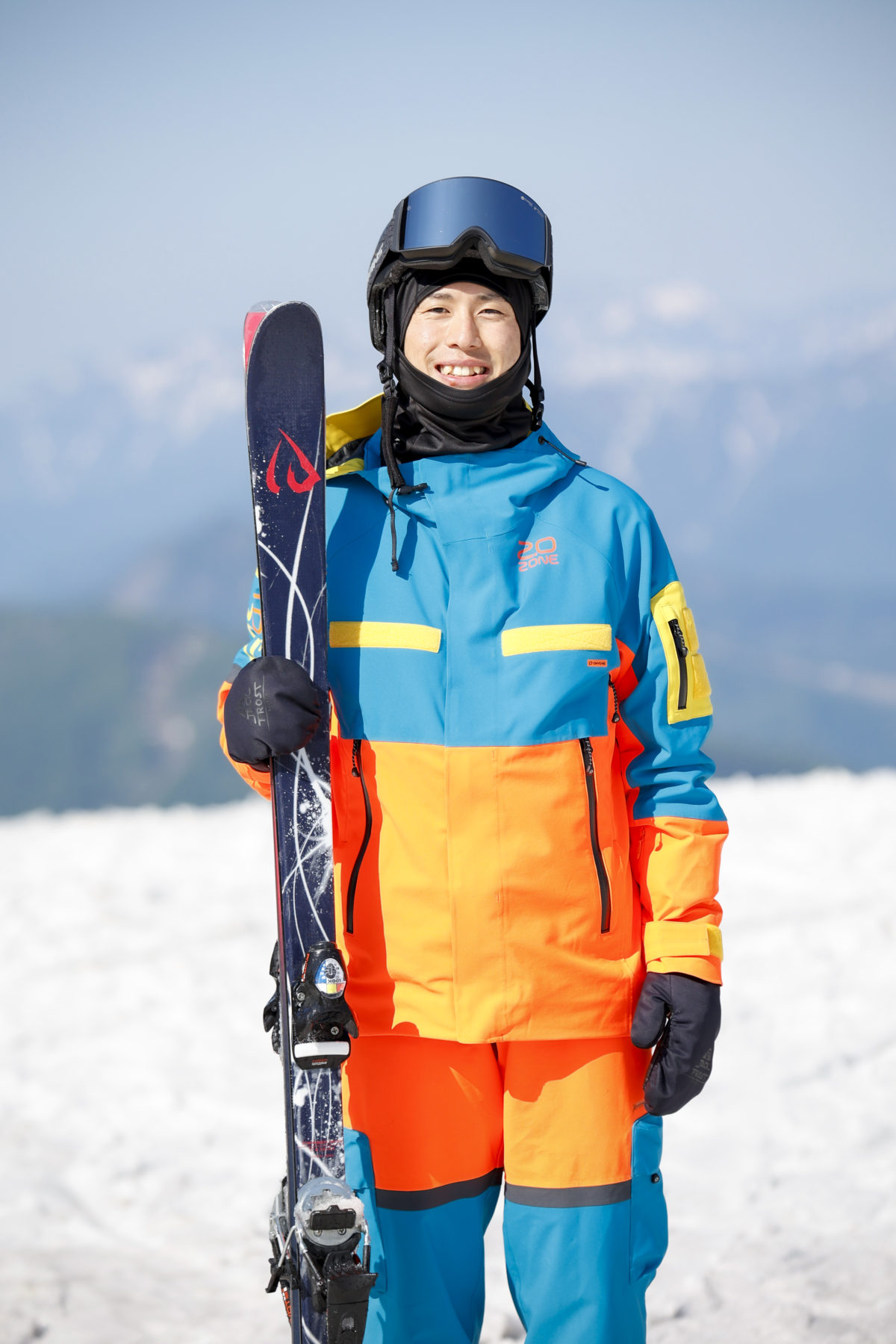
Ikuma Horishima
Born December 11, 1997 in Ikeda, Gifu Prefecture
Belongs to the Toyota Motor Ski Club. Needless to say, he is the ace of Japanese men's moguls. In the 2022 season, he finished second overall and won a bronze medal at the Beijing Olympics. In the 2023 season, he won both Dual and Moguls at Dusalpes in France. He continues to perform well and lead the Japanese team.
Instagram: ikuma1211

